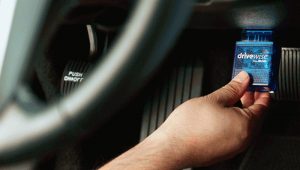
Are you a safe driver? Do you obey traffic laws? If the answers for these questions is ‘yes’, chances are, you’d like the concept of usage-based insurance, or UBI. This approach allows you to select coverage based on your driving behavior scores monitored using smartphones, cameras, or on-board diagnostics. In a word, the safer driver you are, the lower price for the insurance policy you get. Sounds like future? There are dozen companies that already offer UBI.
Over the next few years, both insurers and their customers will adopt pay-as-you-drive policies. Some may even offer this as a part of the purchase process of a car, with car dealerships adding this into their systems (be it via Dealer.com or with other software packages). But why are they getting so popular? There are at least three reasons:
- UBI scoring is 200% more predictive than typical insurance claim assessment.
- UBI allows car fleets and individual customers to reduce insurance costs.
- UBI scoring improves safety on the road and encourages positive changes in driving behavior.
That said, usage-based insurance looks like an adequate alternative to the standard solution. However, this approach requires sophisticated software and implementation of smart devices whereas the number of development companies with enough expertise is not high. Let’s see how the whole concept works (further technical details provided by Elinext insurance software developer) and what makes it more effective.
How does technology work for UBI?
The technology that stands behind usage-based insurance is introduced by three types of devices:
- Mobile app for car tracking that keeps fleet managers and car owners in touch with their vehicles 24/7.
- Telematics devices, for example, OBD – on-board diagnostics, that log files necessary for scoring.
- Video cameras integrated with scoring software that enables more precise assessment.
As a rule, the policy is crafted based on the events that exceed pre-determined measurements – for example, once driver surpasses speed thresholds, the system qualifies it as an exceptional event that increases risk. Thus, a series of such events affect overall driving score and lead to higher cost of the suggested policy.
However, customers strive for better precision gotten from large datasets from multiple devices and sophisticated scoring system that accounts for all the aspects of driving behavior as well as the quality of the road and condition of the specific vehicle.
Thus, when the risk is associated with the behavior on the dangerous road which requires slower speed, more stopping and starting again, this won’t affect driver’s score for the worse. The whole system will provide the insurer with decent underwriting insights and act as a loss prevention instrument. As a result, a good driving behavior on a challenging road will not be penalized.
The other important aspect is video processing. Standard solutions rely on human interpretation of video recording, which drives the risk assessment out of context. That’s where innovative software solutions come into play to empower automated video recognition in conjunction with driving behavior scoring. It is based on the real-time video with AI-based recognition of the related objects, such as pedestrians, other vehicles, road signs, intersections, and more.
What is more, video capabilities expand to internal view analysis and shoot videos from the inside of the car to evaluate what the passenger experience is.
In a nutshell
A new era of car insurance is already there, with usage-based approach powered up by software solutions, smart devices and predictive analytics tools. Instead of relying on human assessment, UBI providers use data-led driving scores which constitute such factors as distracted or aggressive behavior as well as the situation on the road and even passenger’s comfort. As a result, they will increase the precision of risk assessment and be able to offer unique, cost-effective solutions for individual drivers and commercial car fleets.








